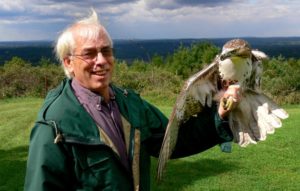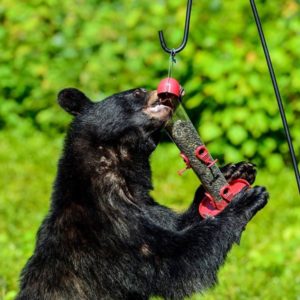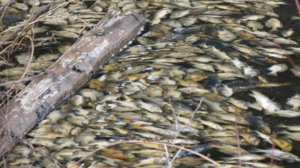Spring trout stocking begins soon
In its March, 2019 newsletter, MassWildlife reported that close to 500,000 brook, brown, rainbow, and tiger trout will be stocked this spring from its five hatcheries located in Sandwich, Palmer, Belchertown, Sunderland, and Montague. These fish, coupled with the more than 65,000 fish stocked last fall, will provide some excellent fishing in the coming months.
Approximately 100,000 trout should be stocked in Western District waters.
The breakdown of the trout to be stocked are as follows:
• Most of the trout will be over 12 inches
• More than 45% of the trout will be over 14 inches
• More than 45,000 brook trout will be over 12 inches
• More than 50,000 brown trout will be over 12 inches
• More than 194,000 rainbow trout will be over 14 inches
• More than 800 brown trout will be over 18 inches
• 1,000 brook trout will be over 15 inches
• More than 2,500 tiger trout will be over 14 inches
Stocking was scheduled to begin in southeastern waters during the first full week of March with other regions of the state expected to follow soon after. The spring stocking is usually concluded sometime around Memorial Day.
Daily stocking updates are available at Mass.gov/Trout, or by contacting local district offices for the latest stocking information. I also plan to list the scheduled stocking locations in this column weekly.
Founding leader of MassWildlife’s Natural Heritage & Endangered Species Program retires
After nearly 35 years of service, Dr. Tom French has retired from his position as Assistant Director of MassWildlife’s Natural Heritage and Endangered Species Program (NHESP). According to the above referenced MassWildlife March newsletter, Tom was hired in 1984 to lead the then newly-formed NHESP. With advanced degrees in zoology, ecology, and systematics, Tom was one of the first MassWildlife employees to not have a traditional game management background, and was the first employee hired to hold a PhD. Tom’s unique background and experience helped NHESP grow to what it is today, one of the strongest rare species programs in the country. 
Beginning with just four staff, NHESP has since grown to twenty-nine as the Program’s responsibilities multiplied over time. Milestones along the way include the creation of the state’s first regulatory list of endangered, threatened, and special concern species (1985), passage of the Massachusetts Endangered Species Act (MESA) in 1990, promulgation of MESA regulations (1992), publication of the first BioMap (2001), partnering with Mass DOT to create the Linking Landscapes Program (2009), publishing the 14th edition of the Priority Habitat Maps to aid in regulatory review for rare species (2017), and more. During these 35 years, bald eagles and peregrine falcons have returned to Massachusetts to nest and have flourished, populations of red-bellied cooters have expanded and stabilized, and northern right whales have become the center of extensive conservation attention. By all measures, Tom leaves behind an incredible legacy and leaves NHESP well positioned to tackle conservation challenges into the future.
Although in a managerial position, Tom didn’t just sit at a desk. He remained active in field work, especially when it came to scaling buildings, bridges, and cliffs to band peregrine falcons. He gave numerous talks and published countless articles on the conservation work of NHESP. He dissected prey item remains and prepared whale skeletons for museum collections throughout the country. Tom is a naturalist who is passionate about conservation and his active role in it.
MassWildlife noted that it is losing a great resource, friend, and advocate for the rare animals and plants of Massachusetts. However, it said, “NHESP will continue on, like the well-oiled machine that it is, because of Tom’s leadership and dedication in making the Program what it is today”.
Black bears are active and searching for food: take precautions
MassWildlife cautions us that black bears are now active and seeking food. If you live in northern Middlesex County, Worcester County, western MA, or other areas where bears have been spotted, it’s time to take down your bird feeders. Bears will often ignore natural foods including skunk cabbage in favor of an easy meal at a backyard bird feeder. Other species including wild turkeys and coyotes may also frequent bird feeders leading to a variety of nuisance issues. To avoid these problems, property owners are asked to be proactive by removing bird feeders and other potential food sources including garbage or open compost. 
If you enjoy watching birds in your yard, MassWildlife suggests adding a water feature, growing native plants, shrubs, and trees to attract birds. It advises individuals to also secure bee hives, chickens, and livestock. Properly maintained electric fencing is the only way to protect chickens or bee hives from bears. Taking these actions may prevent the unnatural feeding of bears and other kinds of neighborhood wildlife.
Report winter fish kills
Again, from MassWildlife, it reminds us that during winter, thick ice and heavy snow cover can result in low dissolved oxygen levels in ponds. With increasing ice and snow packs, there is less light penetration through the water column. This alters chemical and biological processes, often resulting in a winter fish kill. 
The vast majority of fish kills turn out to be caused by a natural event. However, it’s important for biologists to rule out other causes including pollution. Natural fish kills are generally the result of low dissolved oxygen levels (anoxia), spawning stress or fish diseases. Dissolved oxygen depletion is one of the most common causes of natural fish kills. Weedy ponds that are less than 15 feet deep are particularly vulnerable. This can be the case at any time of the year but generally occurs during severe winters or late spring/early summer.
Ice anglers may encounter signs of a low oxygen environment when they drill through the ice and notice the smell of rotten egg or observe sluggish or dying shiners. The odor is hydrogen sulfide gas which is a natural byproduct of low dissolved oxygen environments, and is not likely the result of pollution. Oxygen levels will be return to normal shortly after the ice melts in the spring.
If you observe dead fish, contact the Environmental Police’s 24-hour radio room at 1 (800) 632-8075. A MassWildlife biologist will review each situation to determine whether the kill is natural or requires a site investigation.
Basic Hunter Education courses being offered
The Lee Sportsmen’s Association will be conducting a 2-session Hunter Education Course at its clubhouse on 565 Fairview Street, Lee. The sessions will run from 6:00 to 9:00pm on Monday, March 25 and from 8:00am to 1:30pm on Saturday, April 13.
The Ashfield Rod & Gun Club will be conducting a 2-session course with Independent Study at 161 North Street, Plainfield. The sessions will run from 6:00 to 9:30 pm on Wednesday, March 27 and from 8:00 am to 3:00 pm on Saturday, April 13.
The East Mountain Sportsmen’s Club will be conducting a 6-session course at its clubhouse on 312 Henderson, Road, Williamstown. The sessions will run from 6:00 to 9:00pm on April 1, 5, 8, 12, 15 and 19.
The Worthington Rod & Gun Club will be conducting a 4-session course at 458 Dingle Road (Rte. 112), Worthington. The sessions will run from 5:30 to 9:00 pm on April 15, 16 and 19.
I am listing these courses well in advance so that you can enroll early. They fill up rapidly. For example, Basic Hunter Instructor Wayne McLain told me that there were over 50 students signed up for his class at the East Mountain Sportsmen’s Club. To enroll in the courses, call (508) 389-7830. For more information, click onto http://www.mass.gov/service-details/basic-hunter-education-course-offerings.
Officers elected at Lenox Sportsmen’s Club
The following people were recently re-elected: President: Tom Ferguson, Vice President: Mark Jester, Secretary: Derek Dubin and Treasurer: Bernie Abramson, all of Pittsfield.
Readers may recall that in last week’s column, I noted that the Stockbridge Sportsmen’s Club takes archery seriously. This winter, they are having the biggest youth league that they have seen with more than 70 people taking part. Well, they are pretty serious about youth archery at the Lenox club, too. Instructor Mark Jester recently commented on Facebook that they also started off with more than 70 shooters in its youth archery league and most if not all of them are still sticking with it.
